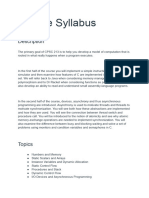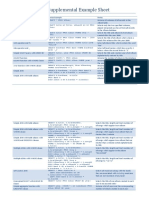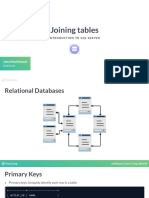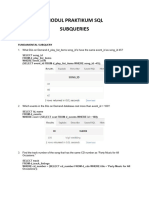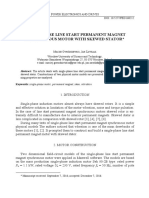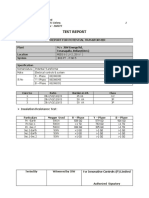0% found this document useful (0 votes)
94 views14 pages9 Spotify SQL Interview Questions
The document provides a list of 9 SQL interview questions tailored for positions at Spotify, focusing on data analysis, data science, and data engineering. Each question includes a detailed description, example inputs, and SQL query answers, covering topics like user listening behaviors, artist popularity, joins, denormalization, and filtering users based on subscription status. The document serves as a preparation guide for candidates looking to excel in SQL assessments during Spotify interviews.
Uploaded by
xindi.zhao.utCopyright
© © All Rights Reserved
We take content rights seriously. If you suspect this is your content, claim it here.
Available Formats
Download as PDF, TXT or read online on Scribd
0% found this document useful (0 votes)
94 views14 pages9 Spotify SQL Interview Questions
The document provides a list of 9 SQL interview questions tailored for positions at Spotify, focusing on data analysis, data science, and data engineering. Each question includes a detailed description, example inputs, and SQL query answers, covering topics like user listening behaviors, artist popularity, joins, denormalization, and filtering users based on subscription status. The document serves as a preparation guide for candidates looking to excel in SQL assessments during Spotify interviews.
Uploaded by
xindi.zhao.utCopyright
© © All Rights Reserved
We take content rights seriously. If you suspect this is your content, claim it here.
Available Formats
Download as PDF, TXT or read online on Scribd
/ 14


